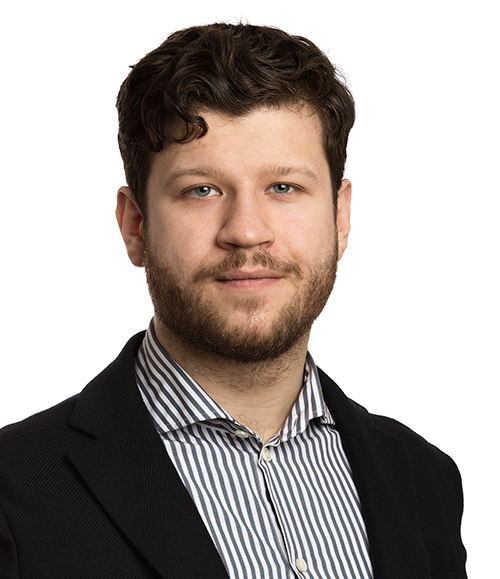Deniz is an Acoustic Consultant ensuring good and desired acoustic environments
Deniz Hadzalic graduated from the Sound and Vibration track of the master’s programme in Engineering Mechanics in 2018. Today he works as an Acoustic Consultant in Stockholm and has big plans for the future.

Hi Deniz, what are you working with at the moment?
I am currently working at an acoustic company called LN Akustikmiljö. The company is primarily famous for their expertise in designing studios and has - among many other projects – worked on the new building for Kungliga Musikhögskolan in Stockholm.
I work as an Acoustic Consultant. Our main projects are in the field of building acoustics, room acoustics, studios and sound attenuation in industry. In brief, my role is making sure a good and desired acoustic environment is achieved. That involves everything from working in big construction projects, e.g. new schools or apartments, ensuring the acoustic demands and requirements are fulfilled, helping companies reducing the sound level at their work place, measuring sound/vibrations, calculating and producing instructions on how to build to achieve best possible sound insulation, and much more involving sound and vibrations.
What can a regular day look like at your job?
Wow, that is a tough question to answer since it can vary a lot! As an acoustic consultant one is involved in considerably more different projects than other types of consultants who are often located with one specific project/company for months, or even years. In one week I can be working with ten different projects to a variable extent.
A day can start with a measurements in situ, attending a project meeting, coordinating and planning projects with different customers and doing calculations.
I do not like the word multi-tasking, but you do have to be good at keeping track of things and be able to switch focus quickly in this profession.
Why did you choose this programme at KTH?
I initially started the five-year Master’s Engineering Programme in Vehicle Engineering, which is a programme given in Swedish called Farkostteknik. After attending the compulsory course Noise and Vibration Control during my second year something happened. As I started understanding the physics of sound my interest started growing. Everywhere I went I thought of how the soundwaves travelled, were reflected, transmitted and absorbed.
Besides my interest in sound, the teachers in the programme are outstanding, not only in the theoretical part of the studies but also in a pedagogical way. They spend a lot of time with the students thus creating good conditions for the student to prosper within the field. The Marcus Wallenberg Laboratory is, among much else, an incredible resource at KTH: therefore, it would have been almost foolish of me not to grab the opportunity.
The programme has given me a strong and stable base to stand on. Most of the mathematics and physics I have been taught has helped me to connect theory with practice. Also choosing courses which allows one to perform experimental measurements has helped me in my work. It is surprising how satisfying it is to apply theory to reality!
What were the best aspects of your studies at KTH?
The knowledge of thinking, learning and solving problems. Not giving up, thinking rationally, and still searching for a solution. Also, all the contacts and friendships that came along are inestimable. Not just between me and other students but also with the teachers.
My best memory from my time at KTH is when I presented my master’s thesis for the last time and saw the smile on the face of my parents; then later shaking hands with my teachers and realizing how much I actually had developed. Not only as an engineer but also as a human being. I am more than grateful for my time at KTH!
What are your plans for the future?
I want to start a new acoustic consultancy bureau where the ambition is to become one of the best acoustic firms in Sweden; not only in the expertise of acoustic consultancy but also as a company to work at. The plan is to broaden the work internationally in the future.
I am also very passionate about emphasizing the importance of good acoustic environments in schools and workplaces in countries where this is not considered as important.
What would you say to a student thinking of applying for this programme?
Are you interested in sounds and vibrations? Then just apply! The strong and stable base you acquire in this programme will take you far, even if later you want to work with something else within engineering or even technical sales.
